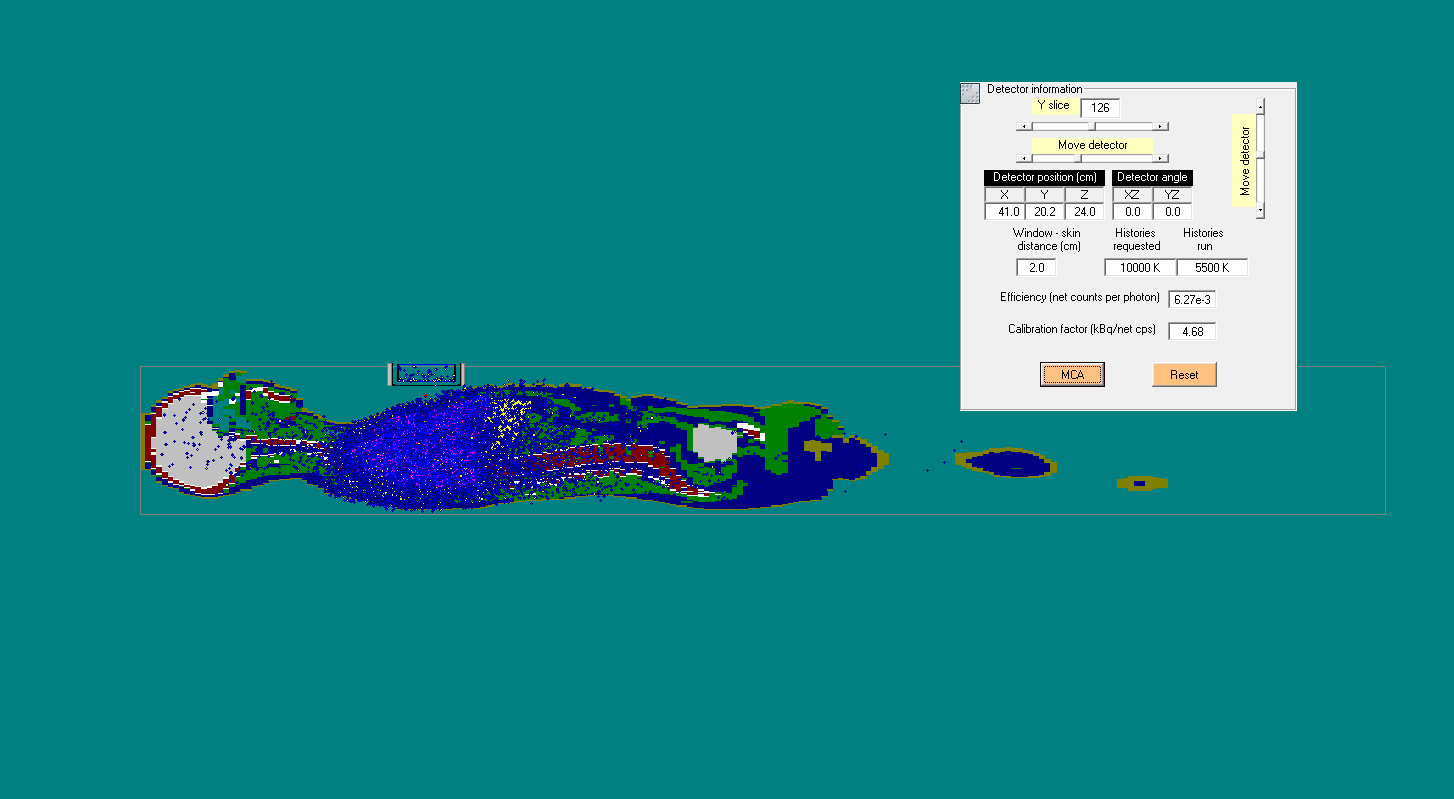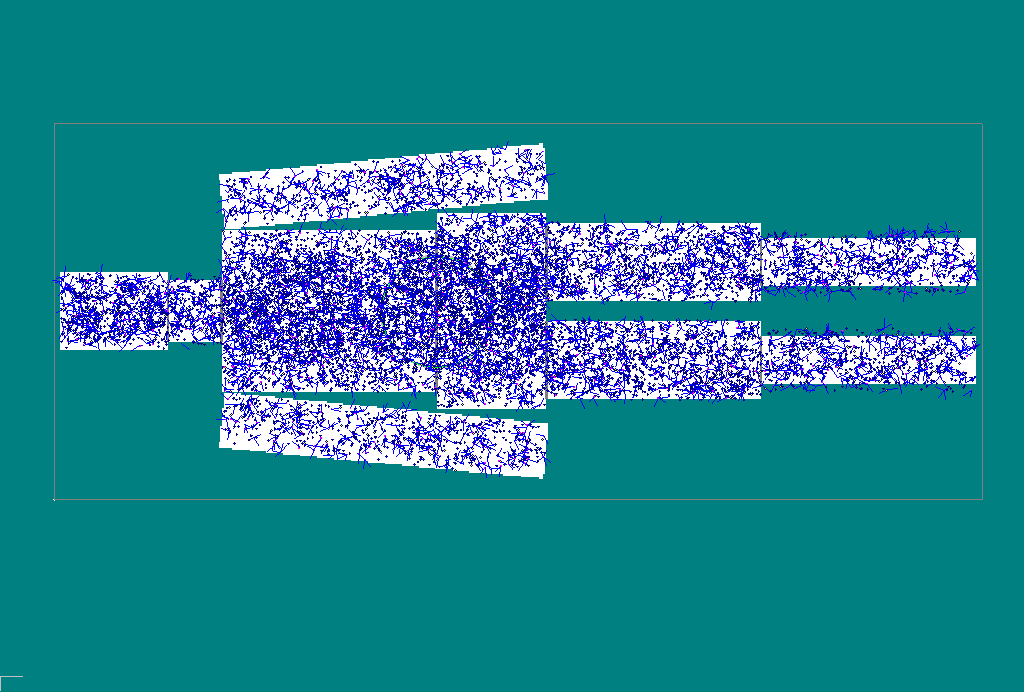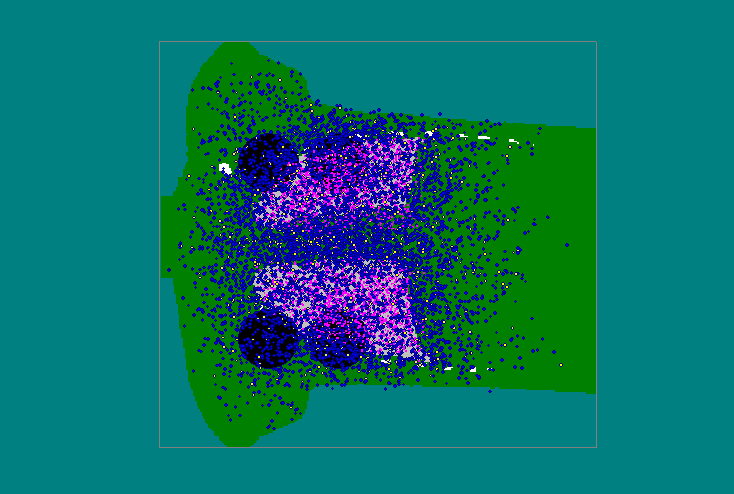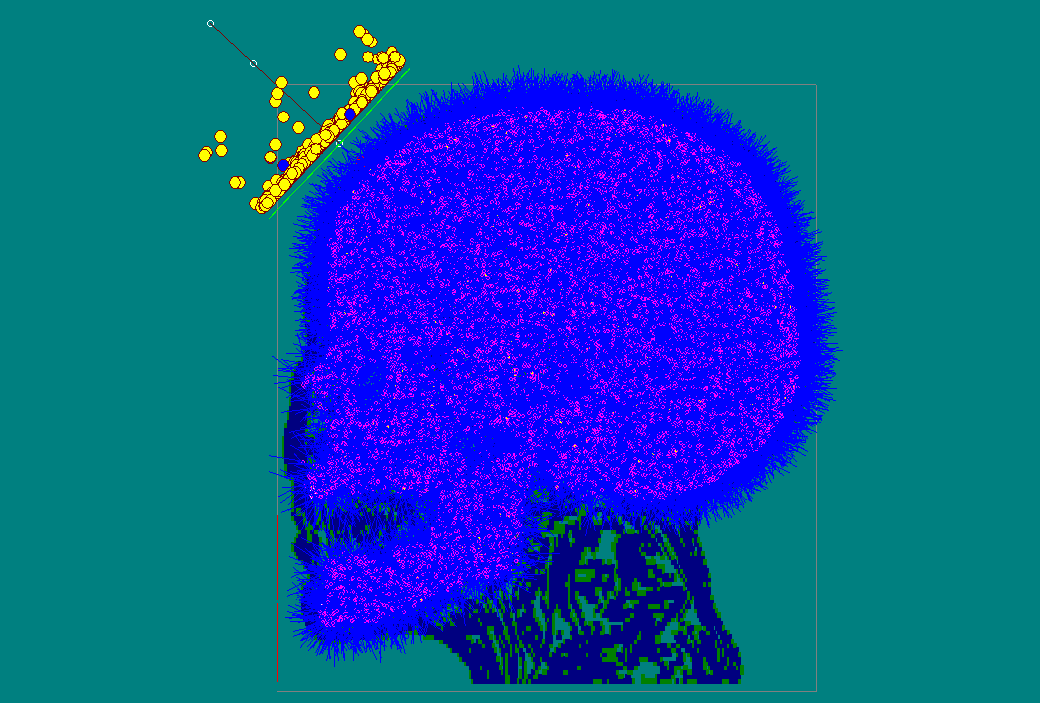
| VMC home |
| VMC in-vivo intercomparisons |
| VMC in-vivo references |
|
VMC in-vivo |
|---|
The development of VMC in-vivo began in 1995 in the Instituto de Radioproteção e Dosimetria IRD and the software has been continuously updated since then. VMC in-vivo simulates mathematically the geometry of whole-body counter systems, transports photons through this geometry, and finally simulates the detection of the photons. VMC in-vivo then calculates the calibration factor in Bq per net cps for the chosen radionuclide, phantom, detector type and detector position. VMC in-vivo also simulates the spectrum as would be obtained by a multi-channel analyser. The validation through international intercomparisons, added to the many years of testing the program with diverse physical phantoms and against other Monte Carlo programs, shows that VMC in-vivo can be used to calculate calibration factors in whole body counter laboratories. Where physical phantoms are available, the physical phantom should be used for the calibration. Where physical phantoms are not available, or to compare the results of Monte Carlo and physical phantom calibration factors, VMC in-vivo can be used. Phantoms included in VMC in-vivo are the ANSI BOMAB, the Bfs head, the BPAM head, encrypted files of the adult male and female ICRP reference phantoms ICRP 110, the LLNL lung phantom and the University of California knee phantom. CustomizationWhere special geometries or detectors are required such as: • Child BOMABs or the male voxel phantom sitting or standing; • Child ICRP reference voxel phantoms; • Rectangular detectors of NaI or plastic scintillators; • Collimated shielding of the detectors, or • Activity in a number of tissues at the same time, for example, 241Am in lung, bone, liver and soft tissues, as in Figure 1 below, please contact me at johngahunt@gmail.com Figure 1. The distribution 241Am in four organ and tissue regions after inhalation, in order of highest to lowest activity. Each distribution has a different calibration factor, see paper.
The Setup program is free from viruses and it is suggested to download it using Google Chrome. If there is a problem with the download, please contact me directly. Furthermore, if you have downloaded the software and would like to receive future updates, feel free to send me an e-mail. VMC in-vivo intercomparisonsThe testing through international intercomparisons, added to the many years of testing the program with diverse physical phantoms and against other Monte Carlo programs, shows that VMC in-vivo can be used to calculate calibration factors in Whole Body Counter laboratories. Where physical phantoms are available, the physical phantom should be used for the calibration. Where physical phantoms are not available, or to compare the results of Monte Carlo and physical phantom calculations, then VMC in-vivo can be used. Successful participation in international intercomparisons is the best way to demonstrate that the software is working correctly. For more information on VMC in-vivo intercomparison results, please use the buttons below. |
| Graphics | ||
|---|---|---|
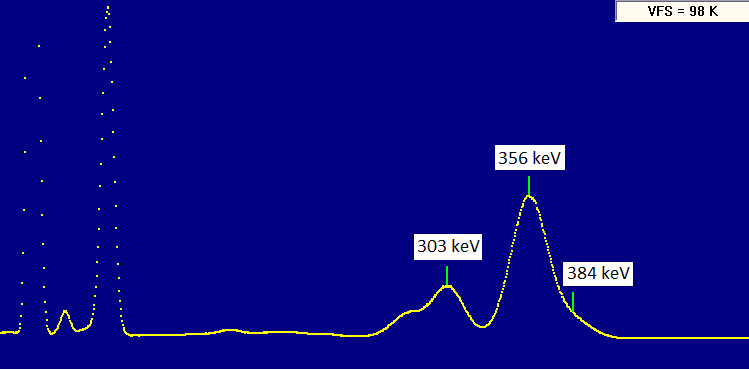
Simulated MCA image of counting 133Ba in lung with NaI detector. Enlarge |
||
